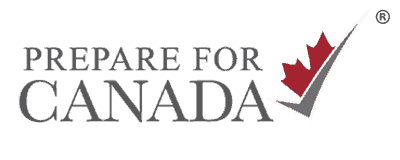
As Scotiabank’s Rebekah Young analyzes what’s ahead for Canada’s economy as 2024 unfolds, it’s clear that she sees “no quick fixes” on the horizon.
Whether it’s Canadian inflation, housing, immigration, economic growth, or productivity, Young, as Scotiabank’s first head of Inclusion and Resilience Economics, is measuring closely how governments at all levels and leaders in the economy plan and implement to avoid a recession, lower interest rates, manage ambitious immigration targets, boost productivity and build much needed, overdue housing.
Before participating in Prepare for Canada’s most recent Canadian Connections Summit 2024, Young shared her insights with us.
Canada, Young observed, is “good at dividing up the pie, but we’ve not figured out how to grow it.”
Providing thought leadership on Canada’s economy
Advertisement:
Young’s thought leadership focus at Scotiabank since 2019 has centred on improved well-being shared broadly throughout Canadian society.
She’s also increased awareness of Scotiabank’s projects, such as Net-Zero Pathway and ScotiaRISE.
Young started at Scotiabank as Director of Fiscal & Provincial Economics, focusing on provincial and federal economic and fiscal forecasts, public policy issues and the global auto sector.

Immigration is part of a larger, complex system
She has a B.A. in chemical engineering from McGill University, an M.Sc. in environmental policy from the London School of Economics in London, England, and an MBA from INSEAD in Fontainebleau, France, and Singapore.
Heading into her participation in the February Summit, jobs, immigration, and housing for all Canadians remain key issues for her.
Advertisement:
Her insights into immigration and the need to replace a rapidly aging (and retiring) Canadian workforce reveal and remind, as she says below, that “immigration is part of a much larger and complex system.”
Here’s what she had to say to us about Canada’s economy and 2024 in advance of the February Canadian Connections Summit.
You recently wrote after the federal government’s 2023 Fall Economic Statement that “Canada needs a more fulsome and informed debate on its fiscal future. While Canada’s government debt—general or federal, net or gross—is pretty good and its deficits relatively small plotted against peers, it risks complacency that could harbour vulnerabilities over time.” What are those vulnerabilities, and how could they impact jobs and immigration?
Canada’s public debt is still relatively low. It is certainly higher after enormous public spending in the wake of COVID-19, but governments around the world similarly saw debt levels surge with spending. Global bond markets can be relative: as long as we are the least bad among peers and we’re not in the midst of a global meltdown, we are generally ok. All of
those boxes are ticked right now.
It is not a given those conditions will hold in the future. Canada’s highly decentralized governance puts more powers in lower orders of government, but this comes with more fiscal pressures. More than half of Canada’s debt sits with provinces and municipalities where there is no shortage of fiscal pressures in the pipeline from health care to long term care to affordable housing, to name just a few.
Canada also has a weak record of investing in longer-term growth. Its productivity is abysmal, however, measured (or whomever faulted). All levels and stripes of government have been leaning on transfers to households as a preferred policy tool to alleviate near-term pressures, while we’ve not yet moved the dial on enabling a thriving business environment. Essentially, we’re good at dividing up the pie, but we’ve not figured out how to grow it.
These are just a few factors that will erode Canadian’s quality of life over time without a more fulsome debate on Canada’s fiscal future. How do we work better together to use limited tax dollars to unlock stronger (and more sustainable) growth to support higher welfare in the medium term?
These trends should be a positive for immigration over the long run. As big as the immigration numbers might be, they come nowhere near close to closing the shortfalls left by a rapidly aging workforce in Canada.
The economic landscape changed substantially in 2023 globally and at home. Can you talk about that shifting landscape?
I’ll stick my neck out and suggest there is a sense of hope – if not relief – that things might start looking up as (2024) progresses. Recall last year, most market watchers rang in the new year calling for a recession. That rhetoric persisted all year as interest rates seemed to just go up and up. Scotiabank Economics was among the few pointing to resilience, namely in job markets and household finances, that was mitigating the worst.
That resilience is waning now, but so too is inflation. The Bank of Canada has more or less said its job is done, which has fueled a collective sense of relief. It is now a question of when they start cutting interest rates and how quickly. We will have more clarity as the year advances.
We will move on to new preoccupations. While we may no longer be gripped with more rate hikes, we will still likely be seeing their lagged effects, including higher (but not historically high) unemployment rates. The pace of rate cuts is also likely to be slower than some may hope. Its resting rate is unlikely to go back to pre-pandemic lows. And there will be no shortage of geo-political risk on the horizon. (We don’t have to look further than our neighbours south of the border as their presidential election season kicks off!)
How should we view the federal government’s new immigration targets, given that it’s the first time since the Liberals took office in 2015 that the levels aren’t projected to increase?
The government’s intention to hold new immigration numbers flat two years out is largely a signalling exercise. The government is acknowledging the growing pains facing its immigration plans. The most visible has been the lack of housing to support a rapidly growing population.
Canadians and newcomers alike are feeling this through still-high home prices (even if resales have softened against high-interest rates) and even faster-rising rents. Other infrastructure, such as healthcare and educational systems, have also proven ill-prepared. Half a million (newcomers) is still a big number – but if we learned anything last year – it’s not as big as
the actual number of arrivals into the country. When year-end numbers are tallied, they will no doubt show that the government hit its permanent resident (PR) target of 465k last year (2023). About 35 percent of those granted PR status are already in the country.
Meanwhile, population growth will likely land somewhere closer to 1.2 mn. That math suggests only about a quarter of Canada’s population growth is coming from PRs, with the balance mostly coming from non-permanent streams, including international students and temporary foreign workers.
All levels of government (and other stakeholders, including academic institutions and businesses) still have their work cut out for them. Canada needs to urgently improve these immediate bottlenecks to ensure that the country can still benefit from the longer-term advantages of a growing and diverse labour force.
Immigration Minister Marc Miller has also announced a broader plan for improving the immigration system. What do you think he’s trying to achieve?
Broadly speaking, the ‘plan’ is welcomed and overdue. The range of measures set out by the federal immigration minister reflects that immigration is part of a much larger and complex system. The plan acknowledges, for example, that the settlement experience of newcomers needs to be improved. It recognizes that there needs to be better alignment
and integration of skills and labour market needs. It also concedes that coordination and collaboration is essential.
The term ‘plan’ is perhaps a misnomer for what is closer to a framework. It provides a structure to weigh trade-offs of sometimes competing policy objectives. It also enables different partners to see where they fit. Positively, it appears to be evergreen, as we’ve seen a series of new measures announced since the plan was unveiled last Fall. More are
still likely needed.
Implementation will be key. There is still the potential for unintended consequences in some of the measures. Also, the federal government and IRCC, specifically, hold few levers across many of the desired actions and outcomes. The intent and commitment are there at the highest level, but evidence will be in execution.
Inflation (aside from housing inflation) appears to be slowing. What does that mean for the cost of living in Canada? And do you see a way, in the short term, to “tame” housing inflation, particularly rent prices?
Inflation is finally starting to approach something more ‘normal.’ We are now seeing numbers that sit within the Bank of Canada’s target range of 1 to 3 percent. But we are not out of the woods yet. We will likely only see that mid-point at 2 percent by this year, with lots of volatility in the meantime. This will keep the Bank of Canada on the edge of its seat at least early this year.
Softening price appreciation should alleviate some cost of living pressures, but it won’t solve them. Keep in mind, prices are increasing, just more slowly, and levels are still high. Across a whole range of products and services, we’re not likely to see pre-pandemic prices again. Fortunately, rising wages are – and eventually, interest rate cuts should – provide further relief to Canadians. Unfortunately, there is no quick fix to housing affordability. Lacklustre supply against a growing population has been years in the making and may even get worse as interest rates ease. It will take concerted and sustained effort across the spectrum of housing solutions to drive meaningful results. This will take time.
For someone planning a move to Canada, the best advice can be to consider the relative costs of living carefully as these can vary substantially across the country – and more so than wages.
Rebekah Young, VP, Head of Inclusion & Resilience economics, scotiabank
What do you see as the positives shaping up for Canada’s economy in 2024?
Perspective and patience are warranted. Economic activity will likely move sideways for much of the year. Interest rates should come down, but maybe not as quickly as hoped. But it could have been worse and still could be worse. We need to get through this necessary slowdown to reaffirm Canada’s long-standing reputation for low, stable and predictable inflation. This is good for Canadians and the economy in the long run.
RELATED: You can watch Rebekah Young at the Canadian Connections Summit here.
Steve Tustin is the Editor/Curator for Rentals for Newcomers and contributing editor for Prepare for Canada. He is the former managing editor of Storeys.com and a former senior editor at both the Globe and Mail and the Toronto Star.
*Prepare for Canada used no AI-generated content in the writing of this story, and all sources are cited and credited where possible.
© Prepare for Canada 2023

Steve Tustin is the Editor for Rentals for Newcomers and a contributing editor for Prepare for Canada. He is also the former managing editor of Storeys.com and a former senior editor at the Globe and Mail and the Toronto Star.

